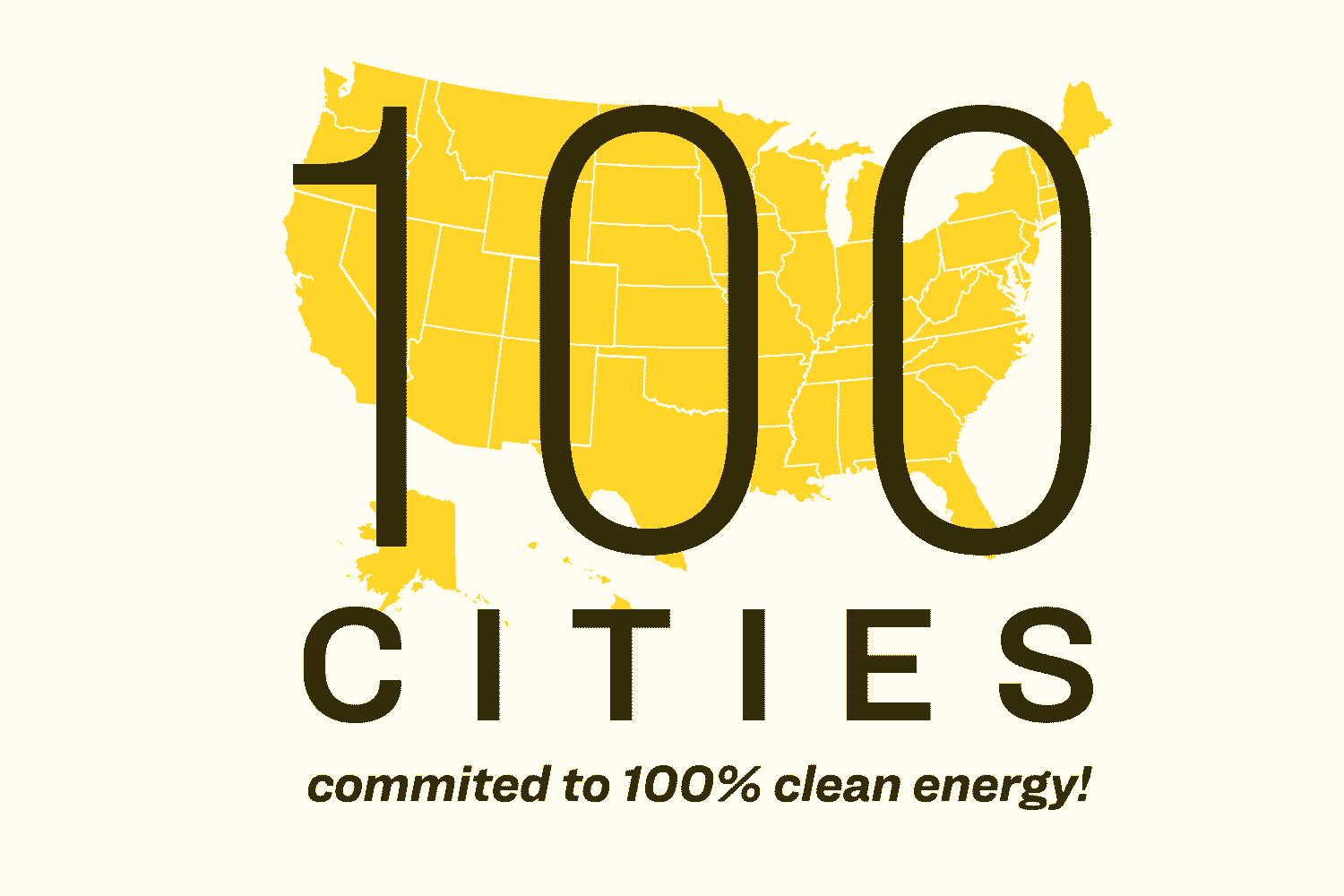
The Ready For 100 campaign began with an incredible idea: that the United States can be powered by 100% clean, renewable energy.
The idea was initially ridiculed. Skeptics said we could never achieve such an ambitious, idealistic vision. We heard every version of "no," "can't," "won't," and "shouldn't." We were laughed out of rooms.
So we did what anyone with a bold idea and a dream for a better future does: we persisted, and we organized.
Just three years since Ready For 100 launched, we have helped build a strong, diverse movement of residents, businesses, faith leaders, community groups, and city leaders all across the country who are calling for 100% clean energy for 100% of the people.
Today we celebrate a major campaign milestone: 100 cities and towns across the United States have committed to transition to 100% clean, renewable energy for all, as Cincinnati, Ohio joins the ranks of communities ready for 100% as city #100. The momentum that propelled us toward this milestone reflects the breadth of support for clean energy, and the accomplishment of reaching 100 belongs to everyone.
Let me take you back to just after the 2016 election. Communities of all stripes -- red and blue, urban and rural -- stepped up to move toward a healthier, affordable, more equitable energy future on their own. The 100% clean energy movement grew exponentially as community members and local decision-makers joined hands to move their cities to 100%. (Now, people in over 150 cities are working locally to implement clean energy solutions.)
In 2017, after President Trump declared that the U.S. would pull out of the Paris Climate Agreement, the U.S. Conference of Mayors passed an historic measure that showed the world cities in the United States were ready to lead the transition away from fossil fuels. And over 200 mayors joined Mayors for 100% Clean Energy, proving what communities fighting climate disruption knew from the get-go: that national climate action would be led locally.
At the end of 2016, 21 cities had established this goal. By the end of 2017, that number nearly tripled, to 57. And today, as we near the end of 2018, 100 cities have committed to powering themselves entirely with clean and renewable sources of energy such as wind and solar.
In addition to the 100 cities, 11 counties and two states, California and Hawaii, have adopted 100% clean energy goals. That means that one in seven Americans -- 48.7 million people, total -- now lives in a place committed to 100% clean, renewable energy. Altogether, these cities, counties, and states will reduce carbon pollution by 120 million metric tons by repowering themselves with clean energy. This is the equivalent of taking 26 million cars off the road or retiring 30 average coal-fired power plants.
In practice, this means that residents of Cleveland, Ohio are moving beyond coal; communities in Columbia, South Carolina are developing a local solar industry; cities across Florida are building climate resilience on their own terms; residents of San Diego, California will be able to take their electricity into their own hands; people in Minneapolis, Minnesota will have clean air and cheaper energy; and the City of Atlanta, Georgia will be working to relieve energy burdens that affect low-income communities.
Some still ask: why was this -- the goal of creating a 100% renewable energy future that works for everyone that majorities support and makes utilities take note -- the idea that took off?
The answer is that a bold vision for a healthy and affordable energy future -- a solution to address the climate crisis and replace the injustices of the fossil fuel economy with a more equitable and democratic system of energy production -- is undeniably what a majority of Americans want. Even many naysayers have turned into believers.
Communities are wasting no time in realizing this vision. In states like Colorado and Minnesota, where several cities are committed to 100% clean energy within the same utility service territory, renewable energy is a priority that utilities cannot ignore. Responding to demand from Denver, Breckenridge, Minneapolis, and Saint Paul, Xcel Energy just announced it will be 100% carbon-free by 2050 across all of its service territories. And the cooperative utility in the Front Range of Colorado, Platte River Power Authority, is about to set an aggressive target date to get to 100% carbon-free resource mix by 2030, in large part because three of the four communities that the utility serves adopted a goal of 100% renewable electricity.
Voters in Portland, Oregon just created the Portland Clean Energy Community Benefits Initiative, a measure that will require big businesses to fund clean-energy projects that benefit frontline communities and put local residents first as the city meets its 100% goal.
In Southern California, San Diego and cities in Los Angeles and Ventura Counties are pursuing Community Choice Aggregation as a pathway to reach climate and clean energy goals while allowing communities to have greater control over where their energy comes from.
It doesn't end with these 100 cities. This is just the first mile in a marathon fight for a more environmentally, economically and racially just energy system.
From the Sierra Nevada to the Appalachian Mountains, the Great Lakes to the Gulf, communities are united in support of 100% clean energy. We will keep working on it city by city, state by state. As we look to the future of this campaign, we remain #ReadyFor100% clean, renewable energy for all. Are you Ready for 100?
Let your local leaders know you're ready for 100% clean, renewable energy -- or if your city is one of the 100 that's already committed, say thanks now!